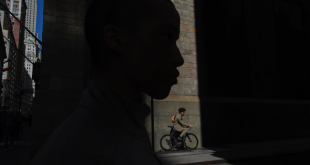Unfortunately not. Countryside access is a huge subject, policed by
specialist lawyers and ‘rights of way’ experts. Unlike in countries like
Sweden or Germany, we can’t wander where we please in this green and
pleasant land of ours. All outdoor users have to stick to ‘rights of way’.
A bike, unfortunately, is not what the law deems a ‘natural accompaniment’
to walking (such as a walking stick or a dog) so you can’t ride on a
footpath. Technically speaking, you can’t even walk on a footpath with a
bike. Cyclists are committing trespass by riding on footpaths – no matter
how wide – and could be prosecuted by the landowner for any damage caused.
Don’t worry, it’s a civil matter, not a criminal wrong. In practice no
landowner will sue you but riding on footpaths upsets walkers.
You can ride on:
Bridleways (27 400 kms)
We’ve had the right to share bridleways with walkers and horses since an Act
of Parliament in 1968. Note the word ‘share’. Horses get spooked easily
and we’re faster than walkers so it’s only fair give them due consideration.
Slow down, smile, say hi and pick up speed once you roll past.
Byways Open to All Traffic (3000kms)
Otherwise known as BOATs these allow all traffic to pass, including
vehicles.
Forest tracks and paths
Permission is officially required for riding through Forestry Commission land. Often this permission has already been granted by the local conservator and the Forestry Commission generally regards cycling favourably. Stick to the waymarked routes, you don’t want to meet a 60-ton logging truck coming round the corner of a dirt track.
Green lanes (10 200kms)
A non-legal term for a pleasant unsealed country road, track or byway.
White roads (7000kms?)
Most roads on Ordnance Survey maps have colours to denote their status.
White roads have no colour so are not recorded as having any rights-of-way
status. When looking at an Ordnance Survey map they can appear to be farm
tracks or private roads when, in fact, they might be public highways. Of
the estimated 7000 kms of ‘lost’ white roads many of them are great, totally
legal trails for use by cyclists just waiting to be ‘found’ and put onto the
‘definitive map’.
It’s a sign!
It’s fine and dandy knowing which routes you’re supposed to stick to, but on
the ground it’s often a different kettle of coconuts. There’s not always a
footpath sign when you need one and many wide, open trails look as though
they must be bridleways. It’s therefore good practice to always carry an
Ordnance Survey (OS) map. These don’t list every right of way – check out
the ‘definitive map’ at your local highway authority for that – but will
include the main ones. Or look for paths that have coloured waymarking
arrows: yellow on footpaths, blue on bridleways, and red on byways that can
be legally used by everybody.
 BikeBiz Bicycle and cycling retail news
BikeBiz Bicycle and cycling retail news



